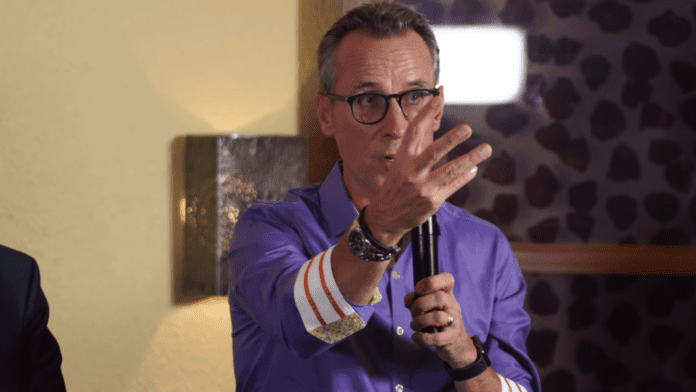Ericsson’s Peter Linder discusses 5G for the enterprise
During a panel discussion at Mobile World Congress Americas, Ericsson’s Peter Linder, head of 5G marketing in North America, shared his perspective on how 5G will drive new value and business outcomes for a variety of enterprise stakeholders. In his commentary Linder provided a number of colorful analogies, likening various aspects of the next generation of cellular to playing golf, bowling and making cheese.
Linder hit on there’s no one type of spectrum that’s right for 5G, but rather a mix of low-, mid- and high-band frequencies are needed to meet the myriad use cases and attendant service requirements.
Up until now, he said, the focus has been on low- and mid-band. “If you’re a golf player, that’s like playing with your driver and your long irons. You hit pretty far; it’s not super, always accurate. What 5G brings is the spectrum that’s more like your short game. Your wedges is the higher-end of the mid-band spectrum and the putter is the high-band. The question is not…to ask, ‘I’m going to play a round of golf, which golf club I’m going to pick?’ Now the game is about using all 14 clubs. We’ve got more options now. We can tailor it more carefully for what you are trying to do.”
On 5G-specific enterprise use cases, Linder said Ericsson went through a process two years ago of identifying use cases that would be “enhanced or enabled” by 5G and arrived at 200 different use cases across 10 industries. But going to market requires clustering those use cases and starting with the easier ones to develop synergy to address more difficult scenarios.
“It’s a little bit like putting up 200 bowling pins at the end of the wall and trying to roll the ball and hit something. You can hit one or two, but if you go for 63 first, then 129, then 186, there’s very little synergies between those different use cases.” With the clustering approach, “You take all those 200 bowling pins and start lining them up in lanes. It’s likely there are pins behind that will come as a direct consequence of you doing a decent proposition for the things developing first.”
Linder also discussed the long-term coexistence of LTE and 5G, and how a tight integration will let operators support whatever type of enterprise use case the market demands.
He said 4G has gone in two directions–one to support high-bandwidth applications and the other to support IoT-type applications. “As an industry, when before, we had been very much about the guys selling cheese, but just doing one thing: big Parmesan wheels. That’s mobile broadband. We do one thing and we do a lot of it.” With 5G, “We’ve got a lot of new businesses, a lot of smaller things. All of a sudden we’re not asking for the big Parmesan wheel. They want three ounces of Brie, four ounces of Gorgonzola. The whole sum of all those cheeses is going to make up a big market.”
To hear more from Linder and view the full enterprise 5G panel discussion, check out this video.

